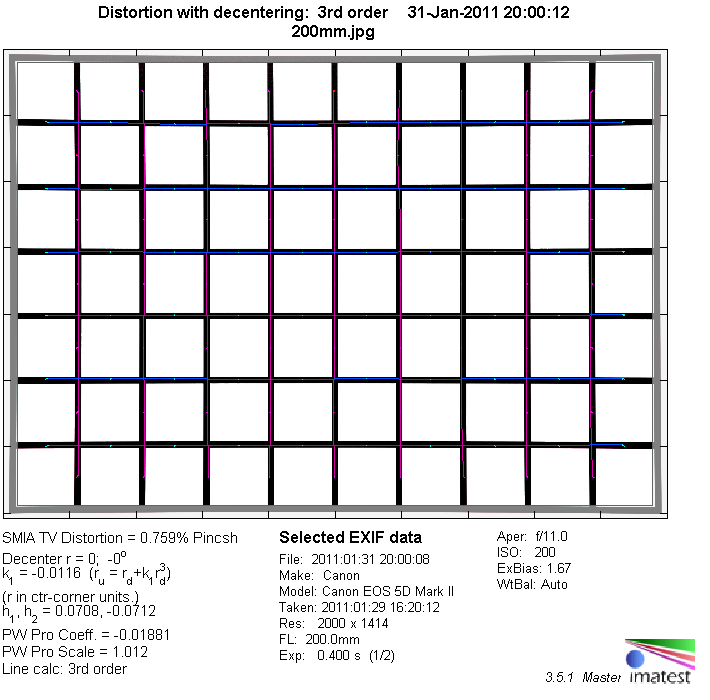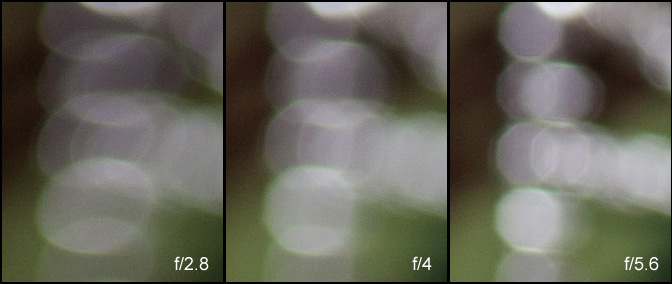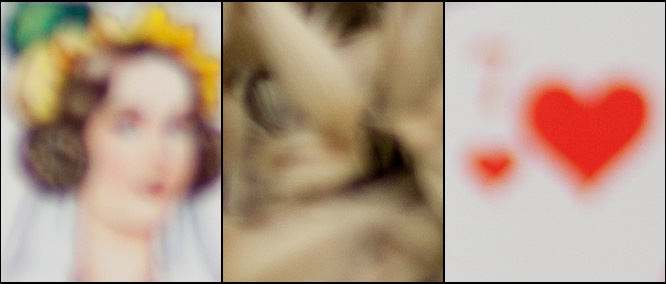|
Canon EF 200mm f/2.8 L USM II - Full Format Review / Test Report - Analysis |
|
Lens Reviews -
Canon EOS (Full Format)
|
|
Page 2 of 3

Distortion
The Canon lens produces a slight degree of pincushion distortion (0.76%). This is usually nothing to worry about in field-conditions.
200mm:

Vignetting
Large aperture lenses tend to show a strong light falloff at max. aperture but the issue is actually comparatively well controlled on the 200mm f/2.8L. The vignetting stays below 0.9EV at f/2.8 - this will be visible in some scenes but it's far from being extreme. The light falloff is basically gone when closing the aperture by just one stop.

MTF (resolution)
The Canon lens is capable of delivering very impressive resolution figures throughout the relevant aperture range. The center performance is very high at f/2.8 whereas the borders/corners manage to cross the good to very good mark (albeit "just"). The contrast level is already very high at this setting. Stopping down to medium apertures lifts the center into excellent quality followed by borders/corners well in very good territory. As usual diffraction start to have a higher impact from f/11 onwards but the lens remains easily usable at this setting.
Please note that the MTF results are not directly comparable across the different systems!
Below is a simplified summary of the formal findings. The chart shows line widths per picture height (LW/PH) which can be taken as a measure for sharpness.
If you want to know more about the MTF50 figures you may check out the corresponding Imatest Explanations
Chromatic Aberrations (CAs)
Typical for most prime lenses lateral chromatic aberrations (color shadows at harsh contrast transitions) are
extremely low and not field-relevant.

Bokeh
Prime lenses should be able to provide a pleasing bokeh (out-of-focus blur) in shallow depth-of-field applications such as e.g. portraits. At f/2.8 the Canon lens is capable of producing circular out-of-focus highlights in the center zone but they're deteriorating to "cat's eyes" towards the borders due to the usual vignetting at max. aperture. Stopping down improves the "cat's eye" effect but the aperture shape gets already visible at f/4. This is a side-effect of the non-rounded aperture blades - a dated aperture design. The inner highlight discs are smoothly rendered. The background- and foreground-blur is very smooth whereas the critical focus transition zones can be a little more nervous.


Bokeh Fringing / Longitudinal Chromatic Aberrations (LoCA)
Bokeh fringing is a color fringing effect in the focus transition zone showing a purple halo in front of the focus zone and a green one beyond. The 200mm f/2.8 USM L II has a rather typical characteristic here with a medium degree of LoCAs at f/2.8. The effect is mostly gone at f/4 and basically negligible at f/5.6.
|
Move the mouse cursor over the f-stop marks below to observe the respective LoCAs
|
| f/2.8 |
f/4 |
f/5.6 |
|

|
|